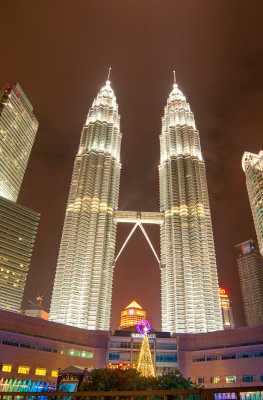Published on May 22, 2015
One of ASEAN’s tourism goals is to entice visitors travelling to more than one member state during their holiday. River cruise tourism is a perfect tool to contribute to that goal, as demonstrated by the Mekong, currently going through a crucial development stage intended to open up the potential of the region to the world. The river reaches deep into Laos, Cambodia and Vietnam, while bordering Thailand and Myanmar as well, offering cruise passengers a chance to visit three or more cultures in one trip, while villages in the Greater Mekong Sub-region benefit from the arrival of tourists where there were none before.
The Mekong River Salween River, bordering Thailand and Myanmar
Other rivers contribute to the same goal as well, for instance the Melaka River, in Malaysia. In its heyday, it was the main artery of trade for Melaka when it was bustling with traders from all around the world. Some buildings from that era still stand majestically by the river, which is also lined by old villages (kampongs), and modern day buildings. A cruise on said river is accompanied by entertaining and informative commentary, providing an informal and relaxing trip through Old Melaka that, together with Penang’s Historical City Georgetown, forms a World Heritage Site. Seeing parts of historical Melaka from a river perspective, while getting a history lesson, is an opportunity not to be missed.
The definition of a “travel experience that is unlike and unrivalled” fits well the Myanmar cruises collection. There are several excellent modes of transport to discover this blessed country, but river cruises simply offer tourists an incredible chance to do so in great style. From the legendary rivers of Irrawaddy (nowadays Ayeyarwaddy) to Chin Win, Myanmar’s River Cruises include: “Road to Mandalay, Paukan, Pandawe, Malikha and Amara Cruises”. These feature different options to make a trip in Myanmar colourful, offering picturesque landscapes, local riverside life and heritage highlights.
Among the numerous river-based tourism destinations in the Philippines, the Bohol River – upstream from Bohol Town and its Church area – is extremely attractive.
River excursions by boat are already firmly on the tourism agenda and very popular among local as well as foreign tourists. The most popular appears to be the lunch tour with a group of local musicians thrown in for good measure. They are talented and have a good repertoire of popular songs but risk to divert the attention away from the beautiful river scenery. Remarkably so, the villagers really appear to enjoy performing, while undoubtedly a strong connection between the performers and the visitors is noticeable.
The Loboc River, Bohol Province, the Philippines
Irrespective of being a local or a visitor to Singapore, a journey on its River Explorer boats is a must to complete the Singapore experience. One can embark on a traditional Bumboat or hop onto an ultra-modern tour boat to stylishly move from one landing point to another. What is most impressive is that within 25 years the inner parts of the city have been totally renovated and the river has been transformed from a cesspool into an attractive and vibrant entertainment and tourism zone of Singapore, appreciated by foreigners and locals alike. In fact what started along the Boat Quay in the 1980s has now moved upstream, from Clark Quay all the way up to Robinson Quay and beyond.
Singapore River Boat Quay
Thailand’s rivers and canals are the lifeblood of the country’s agricultural economy and have played an important role as a means of transportation and communications. A number of cities of historical importance, including the former capital of Ayutthaya and today’s commercial and political capital of Bangkok were built on river-banks. Iconic tourism spots; such as, the Grand Palace, the Temple of Dawn and Thammasat University are located on the river, along with numerous hotels and entertainment/shopping complexes. They make excellent sightseeing attractions, especially for the many different kinds of river cruises. The popular dinner cruises are just one way to enjoy the fascinating waterways. The most important river, the Chao Phraya, and the many canals that link various areas of Bangkok are popular for commuting and appreciating the sights and attractions located along them.
View of Chao Phraya River by night, Bangkok, Thailand
In Viet Nam it’s the Mekong again that grabs our full attention, especially its mighty Delta in the south of the country, where multiple-day river cruises include touring canals and paddy fields, alternating with visits to orchards, floating markets and craft villages along the way. The Mekong Cruise boats tend to increasingly become more luxurious. While ocean liners seem to be focused on thrill-seeking experiences, the trend on river cruises is to add more and more luxury amenities to its products.
Notwithstanding Mekong’s dominance in Viet Nam’s cruise tourism, one of the most notable features of river based tourism is the meandering Huong River (Perfume River). As both Hue’s Imperial Citadel and the Thien Mu Pagoda are situated on its river banks, a cruise on a modest, yet comfy vessel offers a relaxing alternative to the land-based Imperial Hue tour.
Floating market on the Mekong River, at Can Tho, Viet Nam
Although the selected examples of what ten ASEAN member states have on offer in terms of river cruise tourism just showed a glimpse of its rich variety, it nonetheless provides a different view of a unique South East Asia tourism product.
River-based tourism in ASEAN: a mildly intoxicating amalgam of cultural
and natural assets of the region.






